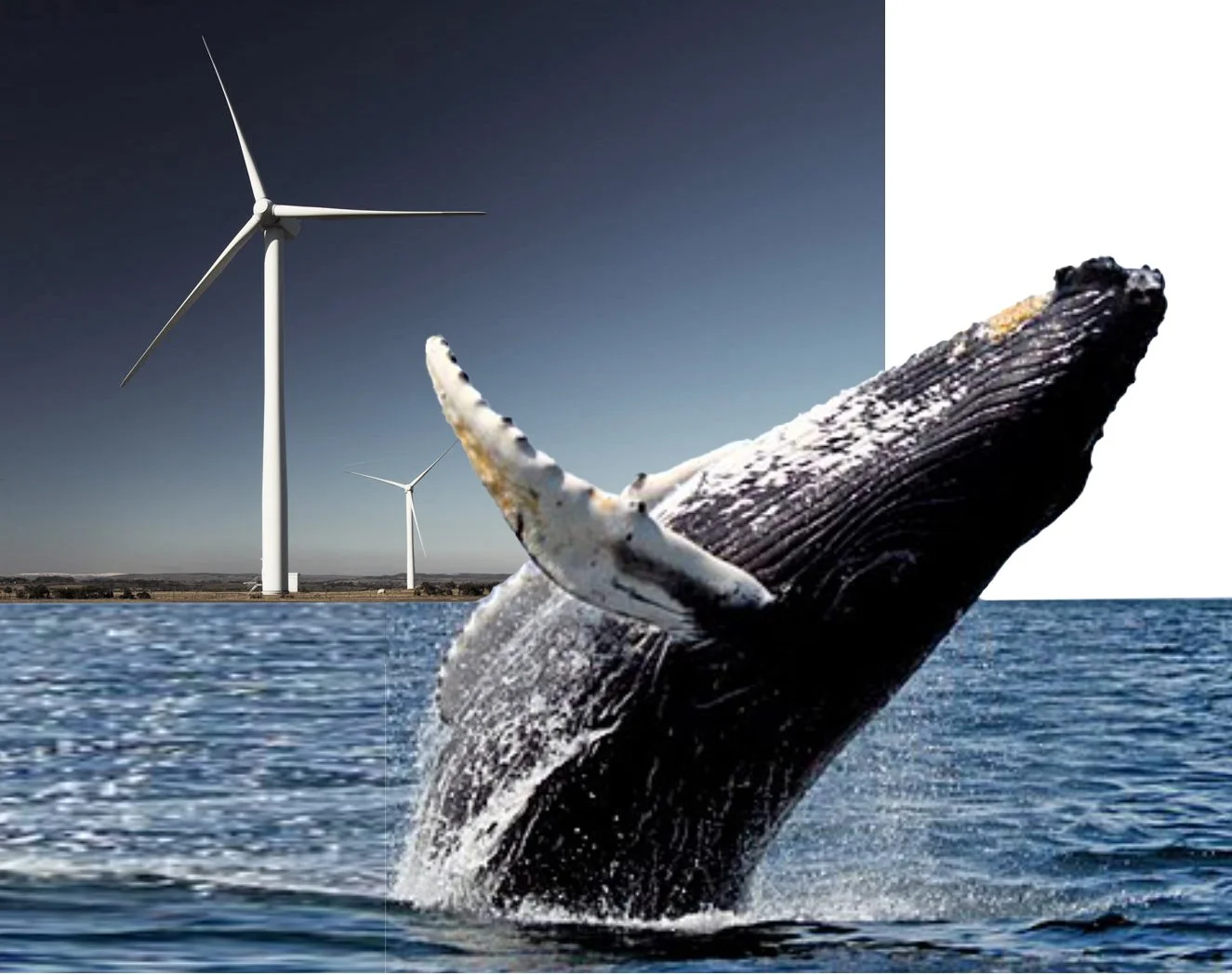The Whale and Mr. Fish
There’s a well-known biomimicry story about an engineer (Mr Fish, no joke!) who visited an aquarium noticed bumps along the leading edge of humpback whales’ flippers on a sculpture. This seemed strange, as he assumed the leading edge should be smooth. Curious, he tested small bumps on his wind turbine project and discovered the blade’s efficiency increased by about 30 percent, significantly reducing drag—similar, perhaps, to a serrated knife blade.
The humpback whale’s flippers provided insights into wind turbine blade design.
Here is the full article titled “A Whale of an Idea” as published on Entrepreneur magazine's site on November 23, 2010
A Whale of an Idea - Frank Fish, an unassuming biology professor at West Chester University in West Chester, Pennsylvania, was on vacation and enjoying a fine-art sculpture of a humpback whale when the genesis of a business idea was formed.
Fish thought the sculptor had made an error in sculpting bumps along the edges of the whale’s flippers. After all, fluid dynamics dictated that the edges should have been smooth. Intrigued, Fish spent decades studying the flippers and how they worked, discovering a few things about fluid dynamics along the way.
In 2004, the results of Fish’s and his three co-authors’ studies were published in Science, Nature, and several other publications. The scientific community noticed. In early 2005, a physics aficionado and entrepreneur by the name of Stephen Dewar met with Fish to learn more about fluid dynamics and humpback whales. Dewar and Fish discussed the potential commercial application of Fish and company’s discoveries to the design of airplane wings, boat keels, and turbines.
In late 2005, Dewar and Fish filed patents and, backed by private investors, formed WhalePower, a Toronto company. Knowing that the industry would be hesitant to invest in technology that was a radical departure from conventional wisdom, Fish continued to conduct research. During trials, he discovered that airfoils with his design were up to 13 percent more efficient than smooth-edged airfoils. Seizing upon the technical term for the “flipper bumps,” Fish named the concept Tubercle Technology.
Today, WhalePower licenses its Tubercle Technology to the industrial fan industry. And, according to Envira-North Systems, the first company to commercially use industrial fans employing Tubercle Technology, the fans are 25 percent more aerodynamically efficient, consume 20 percent less energy, and create significantly less noise than conventional fans. WhalePower is growing at double-digit rates and is in the process of negotiating licenses with manufacturers of computers, servers, HVAC units, and other appliances. Fish foresees the use of Tubercle Technology in the wind energy and airline industries too.

